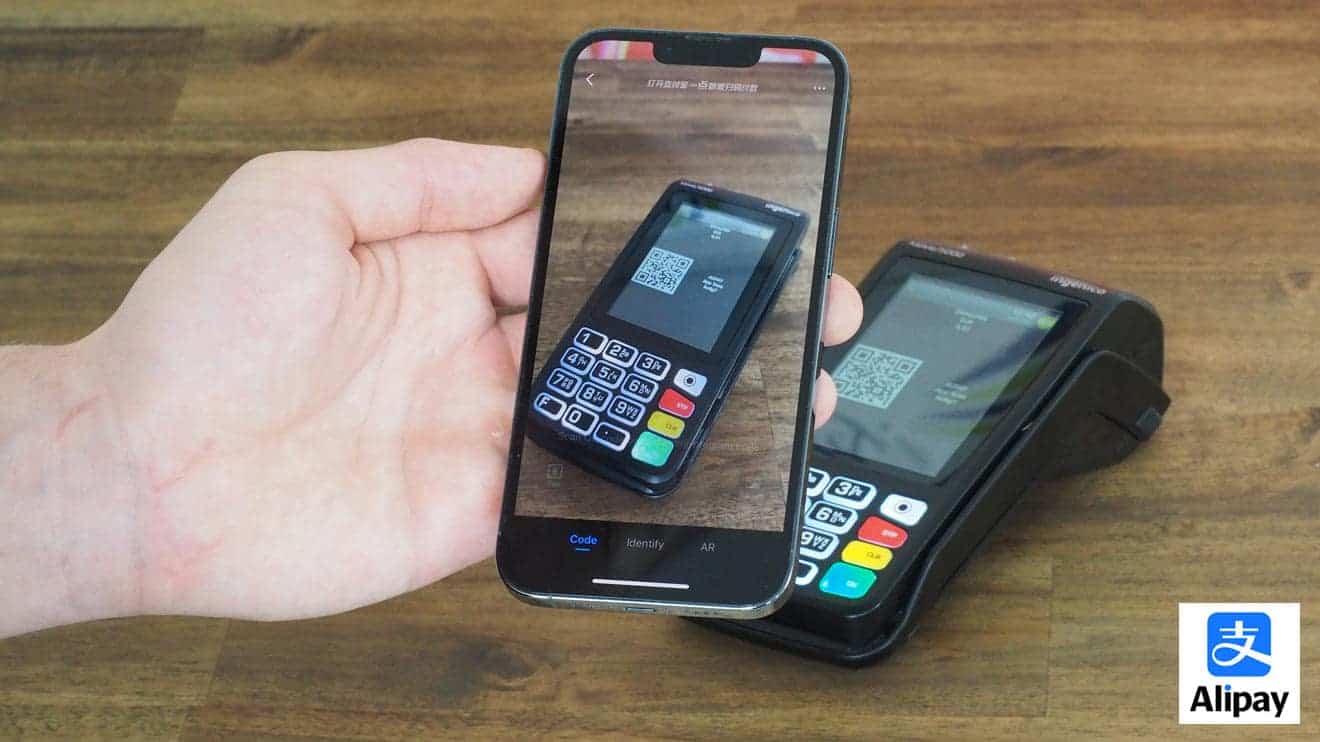Chinese customers prefer to pay with Alipay. German companies can easily set up Alipay
Simply paying with Alipay in stores, hotels or restaurants is a big hit with Chinese customers. In China, the payment app is the most widely used mobile payment method, with a market share of over 90 percent1. Almost every Chinese customer has Alipay installed on their smartphone and uses the app in every situation. For many Chinese, it is therefore often a real shock when they cannot use Alipay at the checkout in Germany. When abroad, their favourite app offers them not only the simple payment function but also, among other things, shopping information, discounted exchange rates, and the quick and convenient reimbursement of value-added tax with tax-free shopping. So if you want to be visible and attractive to Chinese customers as a retailer or service provider, you should offer Alipay as a payment method.
How does Alipay work?
Alipay belongs to what are known as QR payments. For payment, the merchant terminal generates a QR code at the checkout. This is done either by manually entering a function code on the card terminal or by preassigning a key on the terminal with the Alipay function. After entering the payment amount, the QR code is generated and shown on the terminal display. The customer scans the code with their smartphone and confirms the payment in the Alipay app. Then the payment process starts.
Surprising sales opportunity with Chinese customers
Although Alipay is so far only available to customers with a Chinese bank account, there are many of them. Before the covid pandemic, about five million Chinese tourists visited Europe annually. Market observers expect the figures to recover, with the level even being significantly exceeded in the medium term. A spend-happy clientele: Most Chinese love German and international branded goods and often bring long shopping lists for friends and relatives. Unlike in China, where product piracy is still widespread, German stores enjoy the trust of customers from the Far East.
This gives rise to opportunities for more than just airport stores, luxury boutiques or upscale department stores in the major metropolises: Over the years, the preferred destinations and behaviour patterns of Chinese travellers have changed, says Dragon Trail Interactive, a consulting firm that helps companies connect with Chinese customers2. Instead of coming as part of a travel group, they are now more likely to come alone or with their families without a well-organized itinerary. In addition to the top sights in Europe, scenic, provincial, recreational destinations are increasingly becoming the focus of Chinese tourists today.
This also benefits companies that are not close to international visitor flows. For example, the drugstore chain Rossmann used credit card data to determine that an above-average number of Chinese shoppers were making purchases in Emden, East Frisia, of all places: The port city on the Weser – rather unspectacular from a touristic point of view – serves as a stopover for many river cruises to Amsterdam or up the Rhine – a very popular option with Chinese customers. Rossmann also counts many Chinese among its customers at many university locations. The retailer has already been accepting Alipay in all its stores nationwide since 2017. Success rate: Rising sales to Chinese customers with falling credit card costs.






